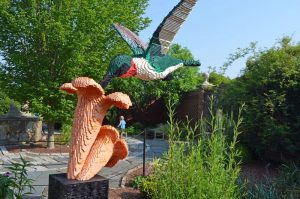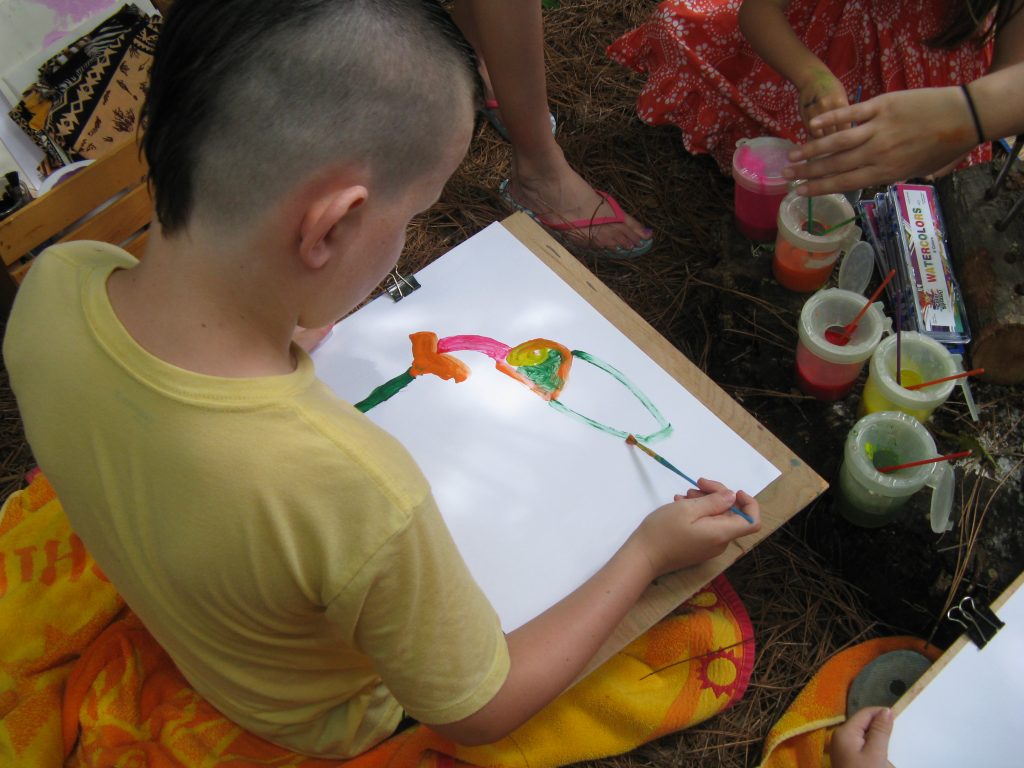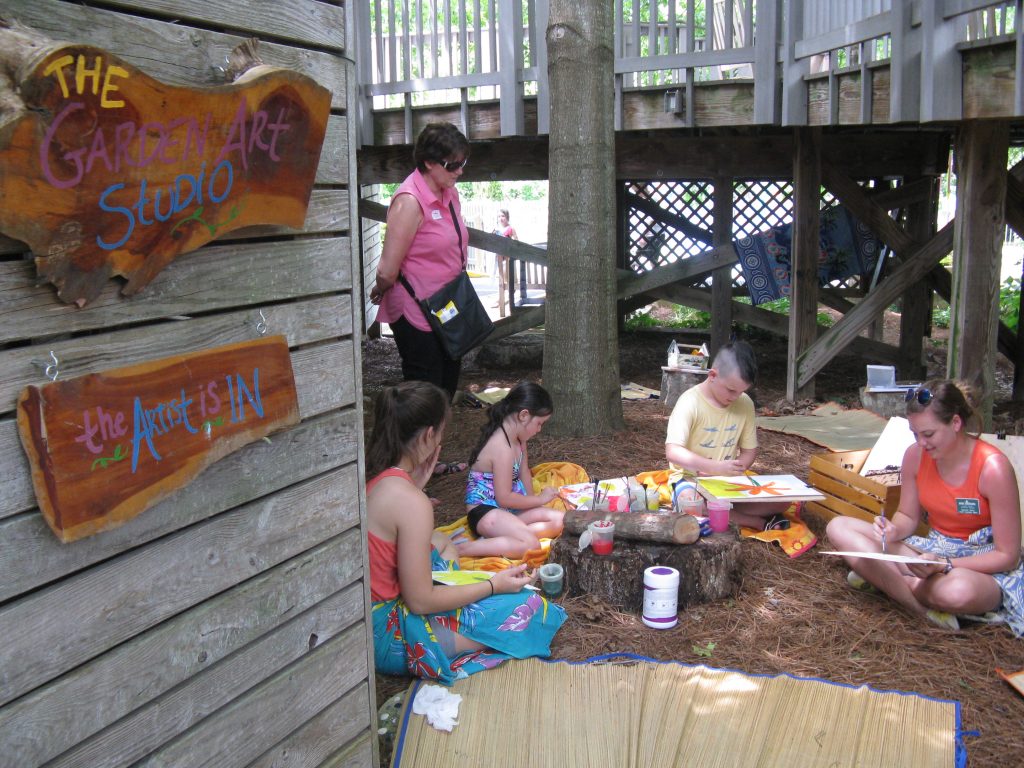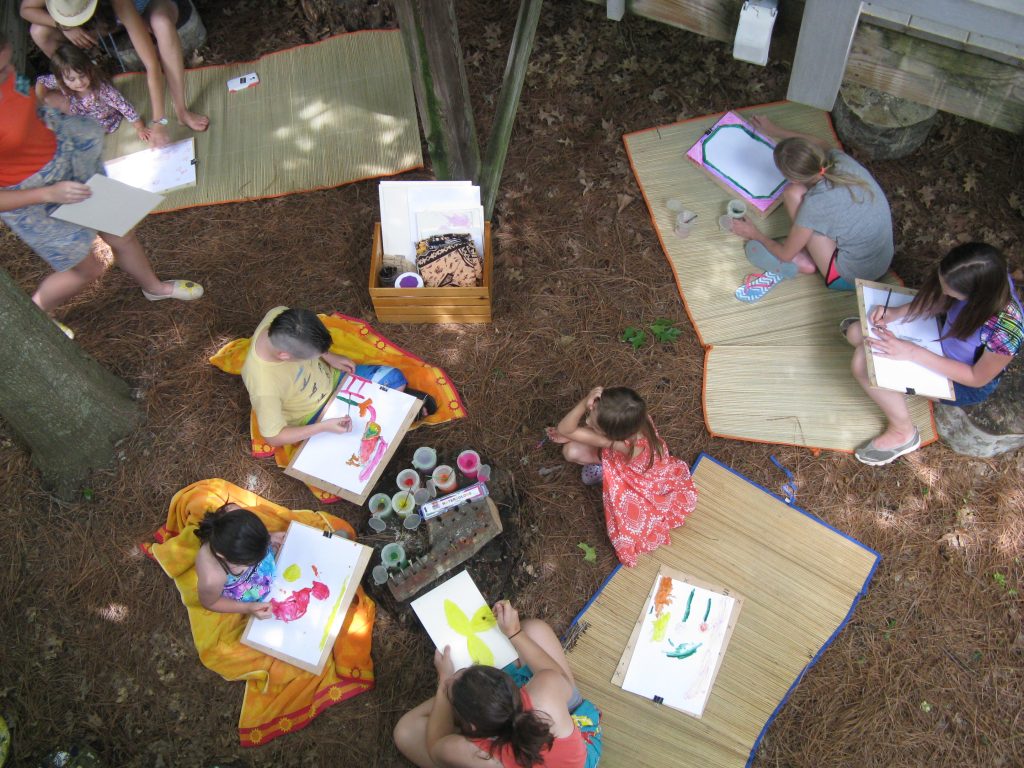Full STEAM Ahead: Garden Art!
Garden Art is the perfect way to let kids have fun and learn STEAM (Science, Technology, Engineering, Art & Math) concepts.
As we roll into the summer season of programming in the Children’s Garden, many of our activities and topics this year are inspired by Nature Connects® the awe-inspiring exhibition of sculptures throughout the Garden that are built entirely out of LEGO bricks. Just like the exhibit, we are taking a STEAM approach to our programming, which means we are combining science, technology, engineering, art and math into engaging experiences for guests of all ages. One of my favorites is our Garden Art program — hands-on learning at its best! Forget about resorting to worksheets and workbooks to combat learning loss over the summer; our young visitors are getting a brain workout while designing mosaics, building sculptures, completing Brick Quest and much more.
This week kicked off our seasonal Garden Art program where we invite guests into a cozy outdoor studio to paint, draw, or just soak in the creative spirit! As soon as we posted “The Artist is In” signs, we had guests ranging in age from 4 to 11 years claiming an easel and setting up shop. Children’s Garden interns Emma Fabelo and Hannah Gertz, both students at the University of Richmond, welcomed visitors and facilitated the experience by offering watercolors, tempera paint, colored pencils, botanical stamps and even LEGO bricks as open-ended art material.

This hummingbird sculpture, by Sean Kenney, inspired 8-year-old artist, Gabriel, to pick up a brush and paint!
To spur creativity, we offer little to no instruction, just encouraging words and plenty of materials. Some adults are a little unnerved by the lack of direction, but the kids are always quick to jump in, usually with a head full of ideas. We had anticipated that the Nature Connects sculptures would be on the minds of many of our young visitors this summer, so we were thrilled when one of our first visitors, 8-year-old Gabriel, was inspired to paint a rendering of Sean Kenney’s hummingbird and flower sculpture, which he had just seen in the Central Garden. Gabe started by painting the trumpet-shaped orange flower, moved onto the hummingbird’s long beak, sleek body and two wings, and finished by adding the fence that surrounds each sculpture. Without even realizing it, Gabe had internalized the concept of adaptation, which is a word he will learn about in his third grade science studies. The hummingbird is adapted to collect nectar from tubular shaped flowers — its beak is long and skinny to reach the nectar inside really deep flowers. Bees, on the other hand, can’t reach that deep and must forage for nectar from flowers that are more shallow. This means that these two animals aren’t competing for nectar from the same types of flowers — plenty of food to go around for everyone! Needless to say, Gabe’s finished painting illustrating this concept was a true masterpiece, just like the sculpture itself.

Gabriel started by painting the orange flower and then moved onto the hummingbird, starting with its beak, head and body.
Feeling inspired? Explore Nature Connects and join us each Monday afternoon from 2-3 p.m. in the Garden Art Studio to create your own botanical masterpiece. And stay tuned for more STEAM updates throughout the summer!


